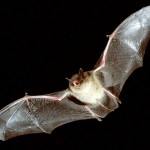By Adrienne Mayor (Regular Contributor)
 Rabies spread by bites of infected dogs has been deeply feared since antiquity. The main vector is domestic dogs, but wild animals such as foxes and bats can transmit the disease to humans. Rabies is almost invariably fatal. The earliest record of canine rabies appears in Mesopotamian cuneiform law tablets from about 2000 BC. The law set a heavy fine for any dog owner who allowed a dog with symptoms of the disease to bite another person. The disease’s zoonotic ability to jump from animals to humans is thought to have originated in Mesopotamia, reaching China in the sixth century BC. Rabies was known in ancient Anatolia by the fifth century BC, mentioned by Xenophon and Aristotle. As rabies spread to Italy and Europe, many Byzantine doctors and medieval medical writers described the symptoms and course of the dread disease (animal symptoms include snapping and biting, excessive drooling, hydrophobia).
Rabies spread by bites of infected dogs has been deeply feared since antiquity. The main vector is domestic dogs, but wild animals such as foxes and bats can transmit the disease to humans. Rabies is almost invariably fatal. The earliest record of canine rabies appears in Mesopotamian cuneiform law tablets from about 2000 BC. The law set a heavy fine for any dog owner who allowed a dog with symptoms of the disease to bite another person. The disease’s zoonotic ability to jump from animals to humans is thought to have originated in Mesopotamia, reaching China in the sixth century BC. Rabies was known in ancient Anatolia by the fifth century BC, mentioned by Xenophon and Aristotle. As rabies spread to Italy and Europe, many Byzantine doctors and medieval medical writers described the symptoms and course of the dread disease (animal symptoms include snapping and biting, excessive drooling, hydrophobia).
Rabies arrived in Greece in the fifth century BC. The ancient temple of Athena at Rhocca (Crete) was notorious for rabid dogs. Athena of Rhocca was invoked to cure human victims of rabies. In about AD 200, the natural historian Aelian described an experiment to cure some young boys who had been bitten by rabid dogs near Rhocca, whose ruins are found south of Methymna, Crete. A doctor administered the toxic stomach acid of seahorses to his patients in an attempt to counteract the mad dog “venom.” This early attempt to fight poison/venom with another poison/venom (anticipating the principles of vaccines, chemotherapy, and venomics) failed and the stricken boys died.
Aelian remarked that a piece of cloth bitten by a rabid dog could imbue the fabric with deadly saliva, causing second-hand infection of anyone who came into intimate contact with it. The virus can indeed infect via an open wound. Aelian’s ominous comment insinuates that mad-dog “venom” could have weapon potential.
Sure enough, historical detective work uncovers two intriguing formulas for creating biological weapons in an ancient Indian manual of warfare. The Arthashastra by Kautilya (fourth century BC) tells how to make many different types of poison arrows. One recipe calls for mixing various toxins with the blood of a musk rat. “Anyone pierced with this arrow,” wrote Kautylia, “will be compelled to bite ten companions, who will each in turn bite ten more people.” The implication is that musk rats were a vector of rabies in India. The other poison arrow recipe calls for “the blood of a man and a goat to induce biting madness,” which sounds suspiciously like rabies. Perhaps goats were susceptible to rabid animal bites. Two thousand years later, in about 1500, the idea of “weaponizing” rabies occurred to Leonardo da Vinci, who envisioned a terror-bomb created from sulphur, arsenic, tarantula venom, toxic toads, and the saliva of mad dogs. In 1650, the Polish general Casimir Siemenowicz entertained a similar notion. He suggested placing “the slobber from rabid dogs” in hollow glass or clay balls and catapulting them on the enemy to cause “epidemics” of rabies. The effectiveness of such weapons is dubious, but the diabolical intentions are chilling.
Adrienne Mayor is a Research Scholar in Classics and History of Science, Stanford University. She is the author of “Greek Fire, Poison Arrows, & Scorpion Bombs: Biological and Chemical Warfare in the Ancient World” (2009); and “The Poison King: The Life and Legend of Mithradates, Rome’s Deadliest Enemy,” a nonfiction finalist for the 2009 National Book Award.
This post first appeared at Wonders & Marvels on 6 July 2013.
